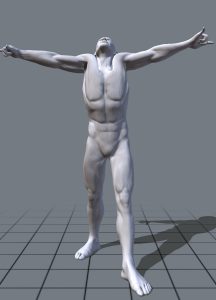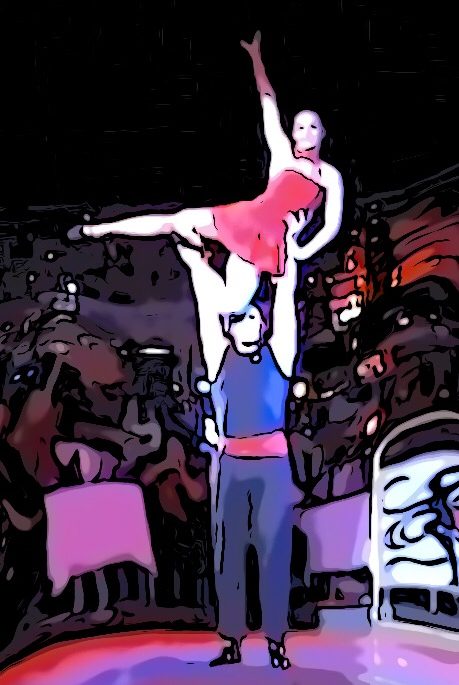The balance on the head is indeed much more stable than the balance on the arms, but since the base has no or very limited eye contact with the flyer, the risk of a shearing is very high. An injury to the cervical spine is very annoying and tedious! So please think twice, whether you really want to try this position …
There are basically 2 ways to balance the flyer:
1) On the forehead with raised shoulders that stabilize the head and cervical spine (is usually used for one-armed counter handstand). Thus the base can not correct with the neck but only with the body, especially with his legs…


2) With the chin pulled back, just above the neck. The base looks very grimly, but can balance with the neck, if only very limited. In this variant, the base has no visual contact…

At first, the base should balance only positions of the flyer that produce little shear forces and then gradually increase:
- Front or back flyer placed on the head (this creates interesting effects when the base rotates under the flyer)
- Sitting (mostly used as an entrance to other positions only)
The following positions of the flyer are only for experts and should first be secured with the lunge, and only with someone who can also lunging!
- Standing (also on 1 leg) with entrance from the shoulder or by shoring with the hands
- Handstand (knot or 1 arm) with entrance from the shoulder
- Head on headstand (usually with ring as aid to the stabilization) with entrance over the upper arm stand
Deutsch

